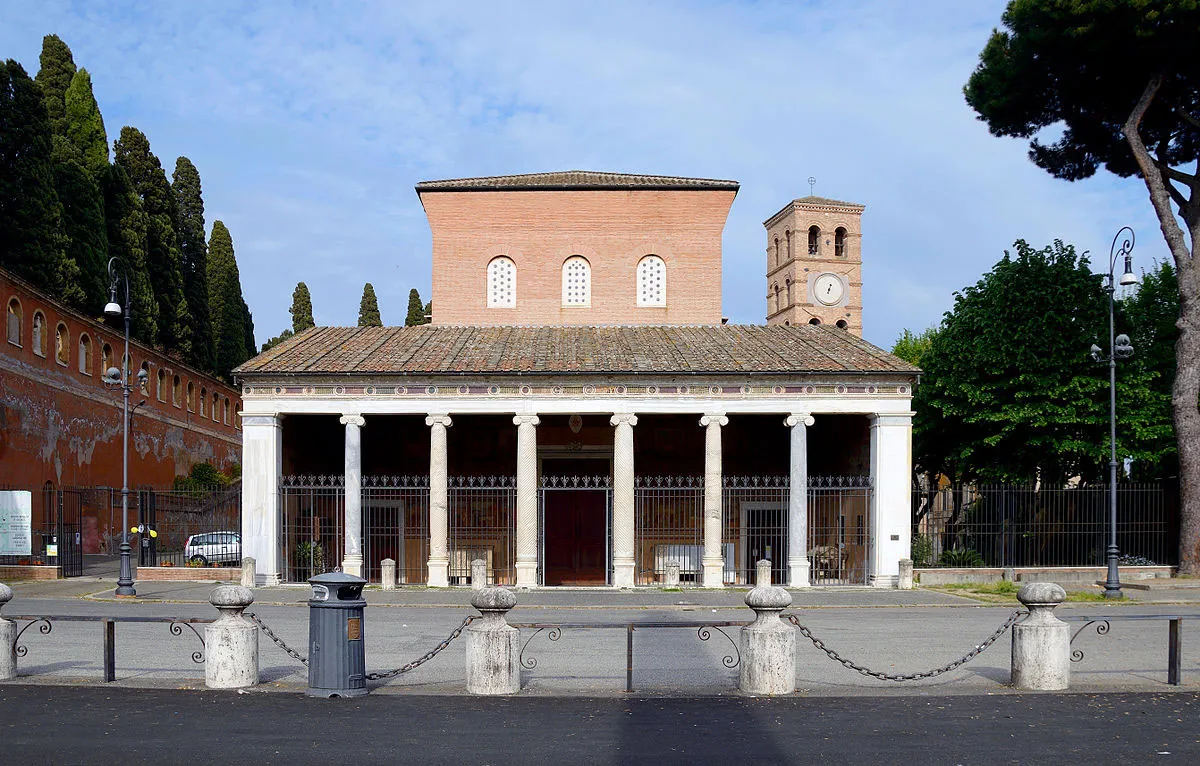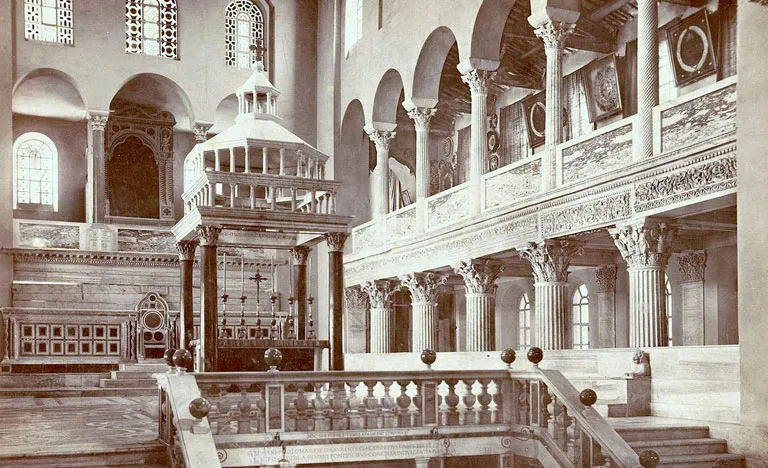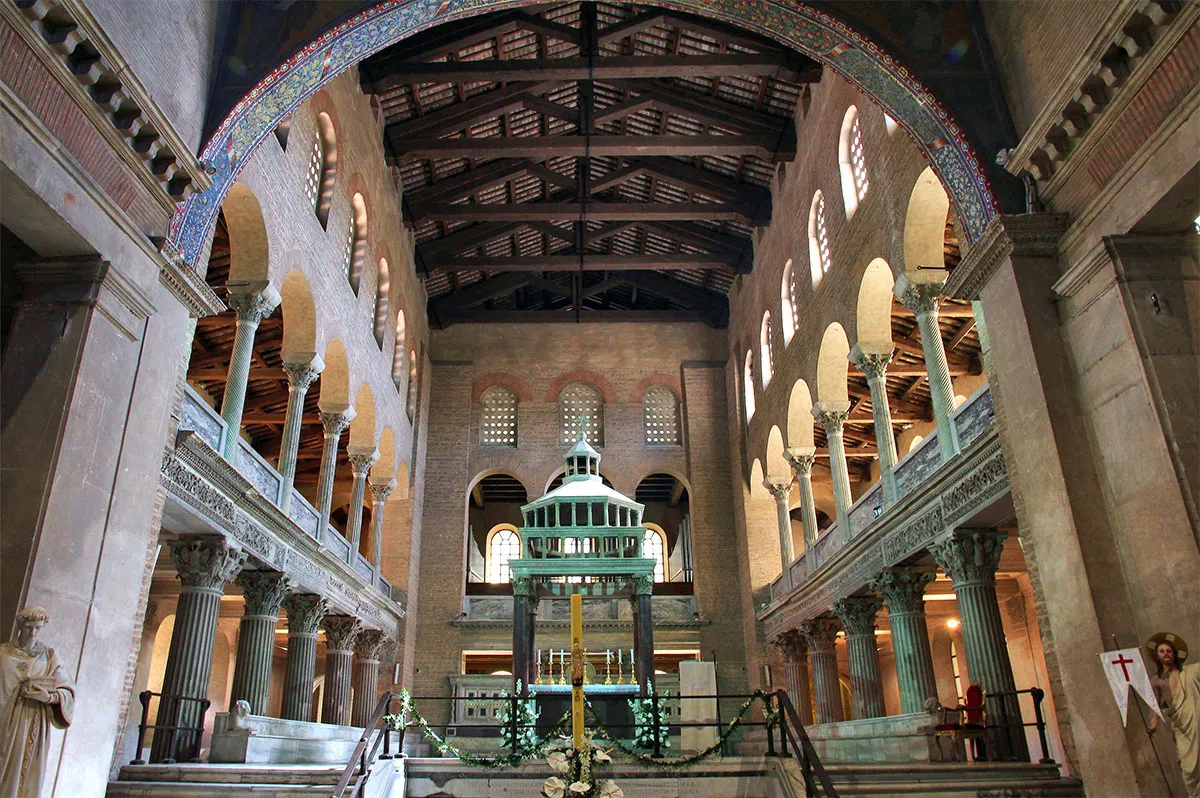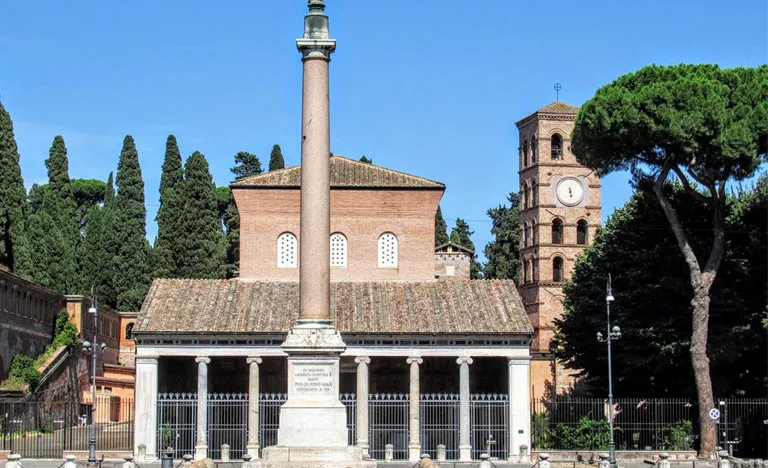
Introduction
The Basilica Papale di San Lorenzo fuori le mura (Papal Basilica of Saint Lawrence outside the Walls) is a Roman Catholic papal minor basilica and parish church, located in Rome, Italy. Basilica, one of Rome’s Seven Pilgrim Churches and a member of the group of five “papal basilicas” was entrusted to the care of the Latin Church patriarchate. Originally, the basilica was under the jurisdiction of the Patriarchate of Jerusalem. It serves as the sacred site where Lawrence one of Rome’s initial seven deacons, martyred in 258, is entombed. Additionally, numerous other saints and Pope Pius IX find their resting place within the Basilica, which remains at the heart of a vast and ancient burial complex.
It is outside of Rome’s large and historic Verano Cemetery and is a shrine to its namesake, San Lorenzo.

The basilica housed a small oratory constructed by Emperor Constantine I. This oratory was built atop the spot where tradition holds that Saint Lawrence was buried in 258. Later, Pope Damasus I, who once served there as a deacon, undertook the restoration or rebuilding of the church. In the 580s, Pope Pelagius II initiated the construction of a church on the same site to honor Lawrence. Subsequently, in the 13th century, Pope Honorius III commissioned the construction of another church in front of the older one. Elements of Honorius’s church, including part of the nave and the triumphal arch, were integrated, though not perfectly aligned.
This new church featured frescoes portraying the lives of Lawrence and the first martyred deacon, Stephen, both entombed together in the crypt, or confessio, beneath the high altar. Excavations uncovered several other crypts of various individuals buried beneath the current street level, including Pope Hilarius. The portico, dating back to circa 1220, boasts Cosmatesque decoration by the Vassalletto family of artisans. The 13th-century frescoes, reconstructed over time, illustrate scenes from the lives of Lawrence and Stephen, highlighting their martyrdoms as young deacons. Additionally, the portico houses two ancient sarcophagi, one Christian, possibly adorned in the 7th century, featuring a relief depicting cherubs harvesting grapes. Although grapes and vines symbolize the Holy Eucharist, these images may not directly represent it. Furthermore, two Romanesque stone lions were relocated here from the original entrance.
The bell tower, constructed in the 12th century, stands nearby. Just inside the entrance lies the tomb of Cardinal Guglielmo Fieschi, who passed away in 1256. Interestingly, he was interred in an ancient sarcophagus, inadvertently decorated with a relief depicting a pagan marriage feast. In 1819, the renowned painter J. M. W. Turner visited San Lorenzo, where he created several sketches.
The central nave of the building became the part of a church reserved for the officiating clergy. To adapt it to this new function, the ancient nave, which originally coincided with the martyr’s sepulcher, was raised by 9 steps, creating space for a small decorated crypt. The wide nave is illuminated by 12 windows on each side, but the narrow aisles are almost dark because the openings are very small. The aisles are divided by 22 columns, surmounted by Ionic capitals whose distance varies because the shafts are different from each other. There are 6 columns in cipollino marble, and the remainder are in granite of different levels of quality. There are also inconsistent colors that range from gray to red and from white to black.
At the bottom of the left aisle there is the entrance to the Catacombs of Ciriaca, so called because they are located on the property of the Roman matron Ciriaca, in which St. Lawrence was buried, so much so that they also had the name of Catacombs of San Lorenzo. The staircase leading to the chapel and the catacombs of St. Ciriaca is decorated with bas-reliefs with the souls in purgatory

Because the Basilica of Saint Lawrence was built Outside The Walls, which meant that it was built outside of the protective Aurelian Walls, it was at risk of attack by barbarian tribes. Because of this risk, between the 12th and 13th centuries a fortified citadel was formed around the church, surrounded by walls and defense towers. These protections mostly disappeared in the Renaissance age, except for the bell tower (campanile) on the right of the basilica.
Within the basilica, the choir enclosure and pulpit feature intricate Cosmatesque decoration, along with a splendid Cosmatesque Paschal candlestick likely dating back to the 12th or 13th century. Notably, the antique Ionic capital adorning the column just behind the pulpit showcases carvings depicting a frog and a lizard. Adorning the triumphal arch are Byzantine mosaics originating from the 6th century, portraying Christ alongside saints. Accessible from the nave, the confessio beneath the high altar serves as the resting place for Lawrence and Stephen. The latter was brought from Constantinople by Pope Pelagius II during the basilica’s restoration. Positioned behind the high altar lies a papal altar, bearing an inscription acknowledging the Cosmati family as its creators and dating it to 1148. In the chapel of San Tarcisio, situated at the end of the right nave, rests a painting titled “Beheading of the Baptist,” created by Giovanni Serodine in 1619. From 1374 to 1847, the basilica served as the residence of the Latin Patriarch of Jerusalem. A restoration project in the mid-19th century was carried out by Virginio Vespignani.
Saint Lawrence Outside the Walls is where he was buried. Though I told the story of his martyrdom last time, it’s certainly worth repeating here. Pope Sixtus II was headed to his own execution when he passed by Lawrence, a deacon of the Church. Lawrence asked the Holy Father why he could not come with him so that he too could die for his faith. The pope told Lawrence that he would join him in death in three days but he first had to distribute the Church’s riches to the poor. Lawrence was in charge of the Church’s material possessions and so he set out to do just that. He gave away all that he could. On the third day he was summoned to appear before the Prefect of Rome and instructed to bring all the Church’s treasures. He gathered up the poor, the sick, the crippled and the blind and brought them before the Prefect. He told him that these were the true treasures of the Church. Thinking he was being mocked, the Prefect sentenced Lawrence to death by fire. He was burned alive on an iron grill. When the time was right, Lawrence asked the executioner to turn him over because he was already done on one side.
His remains were brought to this site and buried in the catacombs. Constantine had a basilica built over Saint Lawrence’s tomb and it was declared, along with Rome’s four major basilicas, a patriarchal basilica. That is a basilica associated with one of the five ancient patriarchal sees of Christendom. In this case, Jerusalem. What’s interesting about the church is that the present structure is actually the result of the union of two distinct churches. The first church is the one built by Constantine, later rebuilt by Pope Pelagius II. The other church was built by Sixtus II. The churches were so close that the apses were almost touching. Pope Honorius III came along several hundred years later and demolished both apses, tore down the wall separating the two churches and joined them. He kept the old basilica’s confessio, so what we now have is a basilica with the main altar in the center of the central nave. Something quite unique in church architecture.
Inside the church is a slab of marble that contains drops of blood from Saint Lawrence.
During the Second World War in 1943, the Basilica suffered bombing by American planes. Restoration efforts persisted until 1948, resulting in the removal of certain additions from the 19th century. Regrettably, the frescoes on the facade perished in the bombings. Subsequently, the brick facade underwent complete reconstruction. Adjacent to a significant cemetery, the basilica frequently hosts numerous funerals.
Annual Feast Day
Feast Date : 10th August
The annual feast day of the Papal Basilica of Saint Lawrence outside the Wall sis celebrated on 10th August each year.
Mass Timing
Winter
Weekly Masses :
Monday to Friday : 8.00 am and 06.00 pm
Weekend Masses :
Saturday & Sunday : 8.30 am, 10.00 am, 11.00 am, 12.00 pm and 06.00 pm
Summer
- Winter: Everyday, 7:30am to 12:30pm, and 3:30pm to 7:00pm
- Summer: Everyday, 7:30am to 12:30pm, and 4:00pm to 8:00pm
Church Visiting Hours
Monday to sunday : 7:30 am–12 pm, 4:00 pm–7:00 pm
Contact Info
Piazzale del Verano,
3, 00185 Roma RM,
Italy.
Phone No.
Phone:+39 06 491511
Accomodations
Connectivities
Airway
The nearest major airport to Papal Basilica of Saint Lawrence outside the Walls is Leonardo da Vinci–Fiumicino Airport. which is 23.4 km away from the Shrine.
Railway
The nearest Metro to the Papal Basilica of Saint Lawrence outside the Walls is Basilica San Paolo (line B). which is 8 km away from the Shrine.








